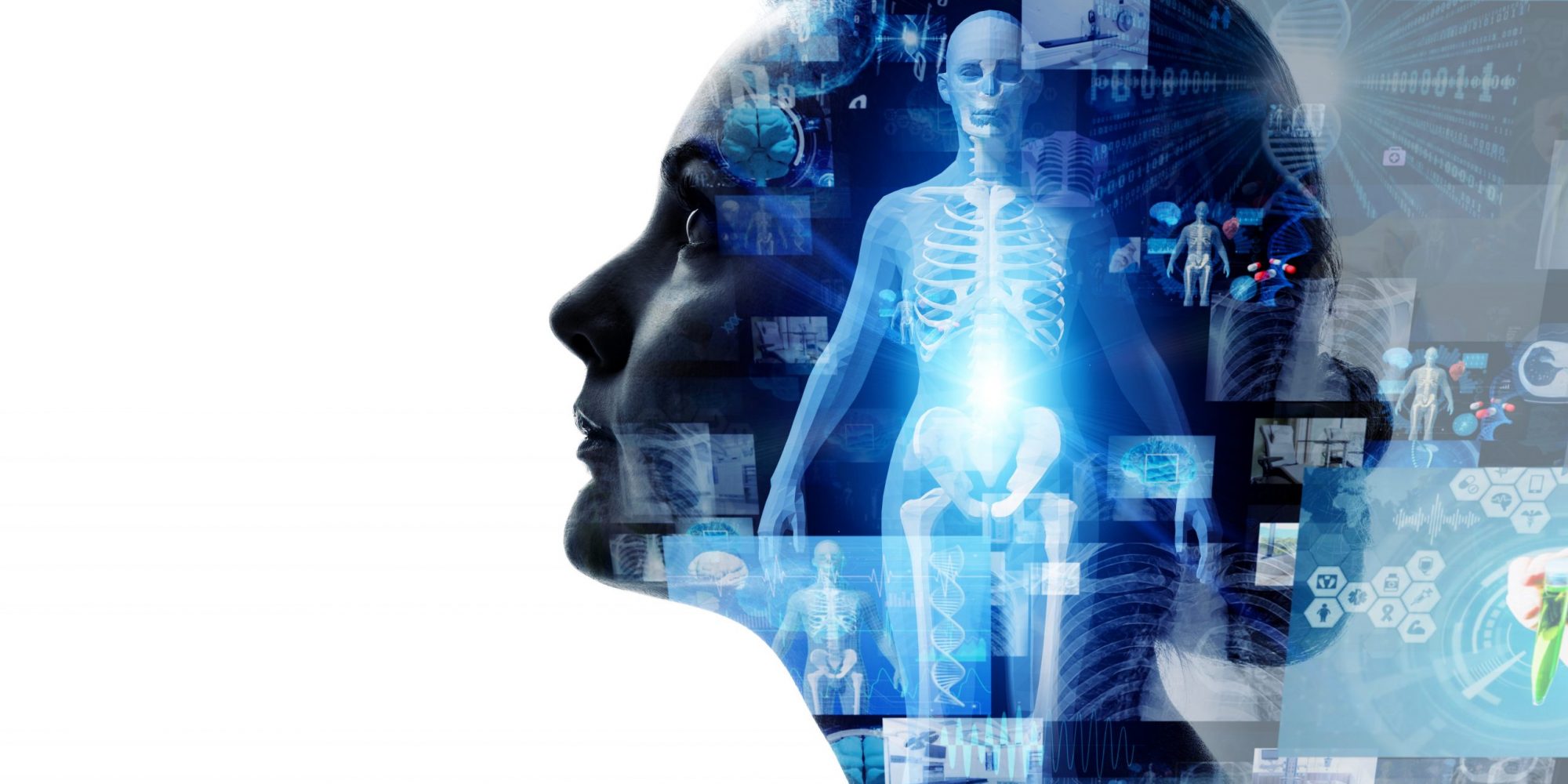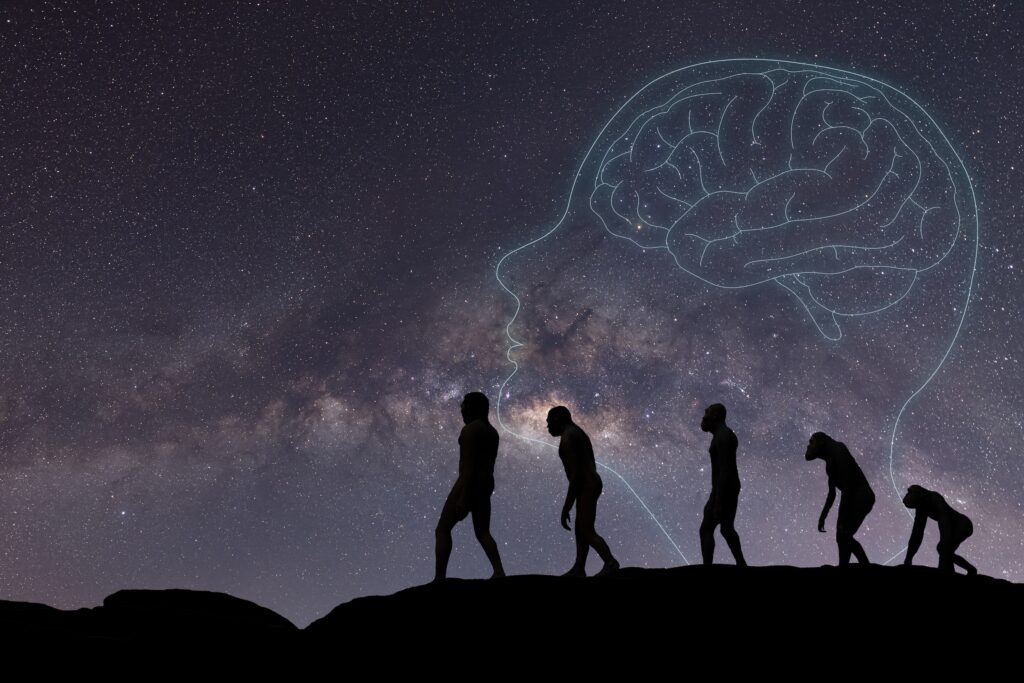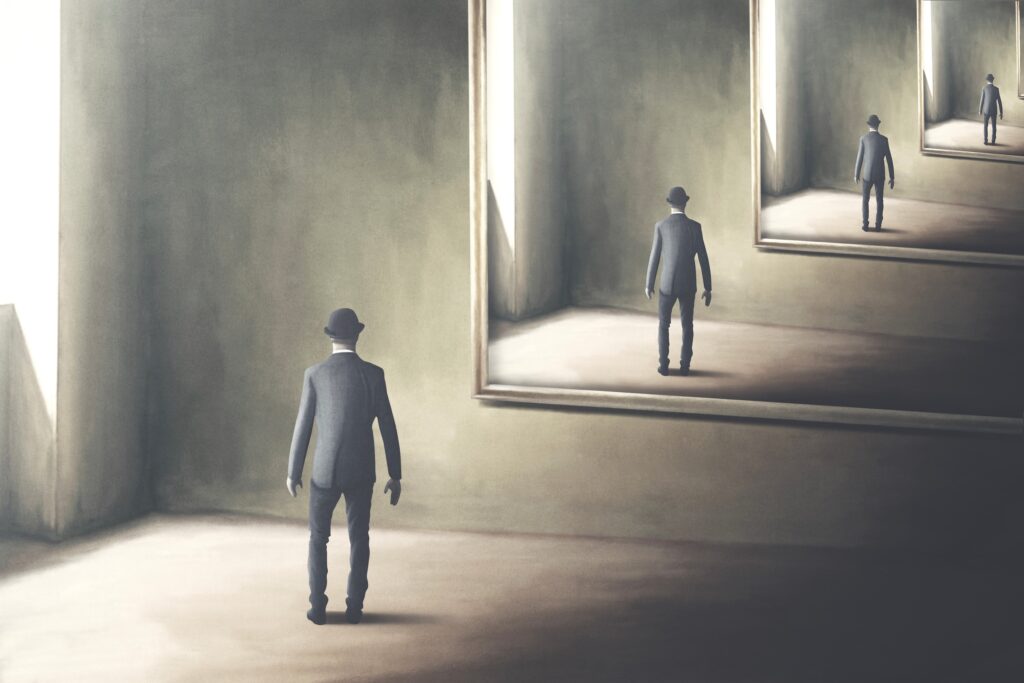The three minds: A framework beyond biopsychosocial medicine
Reading | Medicine
![]() Anoop Kumar, MD, MMgt | 2021-01-08
Anoop Kumar, MD, MMgt | 2021-01-08

In this cogent essay, emergency physician Dr. Anoop Kumar elaborates on his view of the fundamental role mind plays in healthcare, as well as his three-minds model.
The insufficiency of the biopsychosocial model
I contend that all medicine is in crisis and, further, that medicine’s crisis derives from the same basic fault as psychiatry’s, namely, adherence to a model of disease no longer adequate for the scientific tasks and social responsibilities of either medicine or psychiatry.
These words were written over four decades ago by internist and psychiatrist George L. Engel to address the insufficiency of the biomedical model of medicine, which regarded biological defects as the foundation of disease. The primacy of biology at that time was understandable. Over a period of centuries, dissections of the body had yielded an understanding of anatomy that closely mapped to our experience of illness. More recently, Watson and Crick described the molecular structure of DNA in the 1950’s, prompting a surge in biomedical research establishing molecular biology as the foundation of modern medicine.
Still, biology only explained and addressed so much, both then and now. The problem was not only that psychiatric diagnoses did not seem to have foundations in biology. Even physical diseases such as hypertension and asthma could not be completely explained in terms of biology. The need to formalize a more comprehensive understanding of disease was clear.
Such views led Engel to propose a new biopsychosocial model of medicine:
Its scope is determined by the historic function of the physician to establish whether the person soliciting help is “sick” or “well”; and if sick, why sick and in which ways sick; and then to develop a rational program to treat the illness and restore and maintain health. The boundaries between health and disease, between well and sick, are far from clear and never will be clear, for they are diffused by cultural, social, and psychological considerations.
Despite Engel’s call, medicine is still largely biomedical in training and practice. A bottomless pipeline of new medications, new procedures, and new devices, the majority of which are developed with a biomedical view, define the modernness of today’s medicine. It is worth asking whether a well-balanced biopsychosocial model of medicine is even possible given the assumptions of allopathic medicine.
My opinion is that it is not. Allopathic medicine has chosen dualist and materialist philosophy as its foundation, and as such, it is at home in the familiar terrain of the body, not the apparently secondary extensions of mind and society. This position is not unique to healthcare; it is the most popular philosophical position in our society, implicitly taught in nearly all schools and homes alike. The problem is that neither the general public, nor grade school students, nor physicians-in-training are taught that our assumptions about the relationships among body, mind, and society are philosophical positions, and that there are other views equally consistent with science.
Engel recognized this:
by now a sizable body of [psychosomatic] knowledge, based on clinical and experimental studies of man and animals has accumulated. Most, however, remains unknown to the general medical public and to the biomedical community and is largely ignored in the education of physicians
This means the challenge is greater than it seems. Not only do we not have a true biopsychosocial model of medicine, our philosophical assumptions, organizational divisions, and general education preclude such a model from taking hold. The public has tried to take matters into its own hands and solve this problem by circumventing philosophical and organizational ideologies and looking to healing systems around the world that emphasize psychosocial approaches.
Assessing our philosophical and scientific foundations requires being able to maintain a certain impartial distance from our identities as biomedical experts—a position not easy to maintain in the face of one-sided stories about the successes of biomedical medicine, the exponential growth of popular new technologies in healthcare, salaries reaching well into the six-figures (USD) that are based on the value of biomedical training, and billions of dollars in profits for pharmaceutical and medical device companies. These are all at least in part a result of our unexamined worldview.
A common criticism of the point I just made is that the success of medicine proves the validity of the philosophical assumptions underpinning the biomedical and, to the extent it is implemented now, the biopsychosocial model. To this I say: I am not questioning the validity of the biomedical approach here. The current model is valid, and it’s not effective enough.
The success we have achieved in medicine is because we are an intelligent and capable species that can achieve some measure of success even when our models are dangerously incomplete. Successes such as killing streptococci, eradicating polio, and transplanting organs have led us to believe that our standards are high, but the needs of our society today are telling us that in fact our bar is still too low. Too many people and too much suffering live outside our measures of success.
In psychiatry, we see evidence of this in the growth of the critical psychiatry and psychiatric survivor movement. In medicine, we see this in the rising tide of chronic diseases and growth of integrative medicine. Personally, I see this in the ER, where I often see the same people having repeated exacerbations of conditions that are triggered not primarily by molecular biology, but rather by states of mind influencing behavior, which in turn is linked with everything from education to economics to transportation. Let us grant this: Allopathic medicine has been successful in significant ways and it has failed in significant ways. The question is: What is the best way forward?
The Three Minds
Medicine is a social science, and politics is nothing else but medicine on a large scale. Medicine, as a social science, as the science of human beings, has the obligation to point out problems and to attempt their theoretical solution: the politician, the practical anthropologist, must find the means for their actual solution.
The above sentiment of Rudolf Virchow, MD, widely considered the father of pathology, notes that medicine is a science of human beings—notably not primarily the science of human bodies, or biology. In line with this, I propose a new framework for medicine and society with stated goals of
- decreasing suffering where possible;
- promoting healing and cure through the integration of body, mind, and society;
- developing self-awareness;
- understanding the continuum of body, mind, society, and cosmos, inclusive of metaphysics;
- collaboration across disciplines and sectors.
The core strength of this framework is its resolution of dualism through an all-encompassing perspective of body, mind, society, and cosmos while giving due recognition to the power and influence of the mind. It pays close attention to how we define mind, how the mind interplays with the body and society, and how each of us, regardless of our educational background, can experience its ranges.
The philosophical underpinning of the Three Minds is the perspective that there are essentially three configurations of the mind we can experience: the First Mind, Second Mind, and Third Mind. Each of these configurations confers a unique sense of identity and corresponding unique perceptual experience of the world. In other words, the world you see and experience is not an independent, external world, but rather one that appears in relationship with the perceiving mind-identity. The ‘world’ is essentially mental, a view consistent with advaita vedanta (non-duality), objective idealism, and every dream, daydream, and hallucination you’ve ever had.
In the First Mind configuration, the mind is felt to be localized in or near the head or body of the individual. The mind is felt to be a subtle, internal, subjective phenomenon, in comparison to the more solid, palpable feel of the body and surrounding objects in the external, apparently objective environment. Here, mind and matter feel, and therefore are imagined to be, fundamentally different. Most essentially, the First Mind is characterized by boundedness (‘me’ in here and ‘world’ out there), and as a result, dichotomy. This First Mind is the most popular mental configuration, and therefore the most popular worldview today. It is the lens through which popular culture, politics, science, and healthcare operates.
Importantly, the world ‘out there’ perceived by the First Mind is also mental, yet is not recognized as such due to the boundary condition keeping the First Mind in its dichotomous me-you, this-that, subject-object configuration, thus veiling the fuller picture. Furthermore, the discreteness of objects (such as a tree) recognized by the First Mind is a superimposition of the discreteness of the boundary of the First Mind. In other words, the tree is not an independent phenomenon, but rather a literal re-cognizing of the First Mind boundary as the boundary defining ‘tree.’ Many First Minds (different people) would necessarily see different aspects of ‘tree’ and intellectually conclude there is an independent, external tree ‘out there,’ of which different aspects are seen by different people. However, a more complete view reveals that each aspect of ‘tree’ cognized by a First Mind is occurring in relationship with only that perceiving First Mind. The world is mental—a view that is entirely consistent with current science.
As the boundary of the First Mind begins to dissolve, the sense of identity starts to de-localize and the apparent boundary defining all objects is seen through. A different experience of self and world becomes apparent. This (de-)localizing identity which can neither be said to be within the body nor without the body (because both are body-boundary-dependent) is the Second Mind.
As the Second Mind, identity and world are no longer restricted to the ideas and perceptions of popular and scientific culture. Space and time themselves are recognized as topographies of the Second Mind. Here, the mind is neither in the body nor produced by the body/brain. Rather, brain, body, and world are themselves aspects of the Second Mind, just as the character in your last dream was an aspect of the dreaming mind.
This does not mean the world is in your mind, my mind, or any individual’s mind, which is a common misconception. Rather, the very experience of individuality, including an individual body, cranium, brain, and individual mind (the First Mind), is a subset of the expanse of the Second Mind. In other words, there are billions of individual minds like you and me on Earth, all of which exist as subsets of a single, experienceable Second Mind, which is simply another configuration of our identity. In between these First and Second Minds are the varied ranges of extended identities we describe as family, friendship, community, profession, race, and nation, often with deep meaning.
The reason there is coordination among our activities in the First Mind configuration (i.e., you and I apparently see the same objects and can communicate about them) is because of our common interests, and because our individual activities are aspects of the Second Mind, just as the activities of the apparently different characters in your last dream were synchronized by their common interests within the dream as well as by the mechanisms of the subtler dreaming mind.
The Third Mind is the undifferentiated potential state of the world, prior to interpretation as discrete experiences across any subject-object interface. Therefore, the Third Mind can also be referred to as no mind, since in the absence of difference all concepts fail.
The goal of the Three Minds is neither to recognize only the essential nature of apparent multiplicities nor to recognize only the differentiated nature of multiplicities, but rather to recognize and experience the full range of experience from diversity to unity, applying the resulting knowledge across disciplines. In the context of our society, this means there is emphasis on learning, understanding, and experiencing the Second Mind since First Mind views of dualism and materialism are ubiquitous. Hence, the application of the Three Minds framework in medicine presents itself as Second Mind Medicine.
The Three Minds address each of the deficiencies of the current biopsychosocial model
First, the Three Minds solve the problem of reductionism and dualism. This framework does not force the cosmos to fit common notions of the personal mind or mind-as-brain, which would just be another form of reductionism. Rather, it proposes that the essential (though not relational) nature of brain, body, mind, and world are non-different, and that investigating the concept and experience of ‘mind’ is the best way to recognize the limitations of today’s First Mind state of understanding and go beyond them. Once the full thrust of the Three Minds is understood and implemented, our knowledge will have developed to the point that the word ‘mind’ itself becomes non-specific. It will be time for a new framework. The concept of the world being physical or mental is only needed until our learning and experience go beyond such words. The Three Minds are a vehicle, not a destination.
Second, the proposed framework includes a complete metaphysics. The Three Minds are states of identity and experience that encompass not only one’s individual mind, but also the body, other living beings, objects, relationships, society, the world, and the cosmos. The relationships among these are clearly delineated and experienceable, providing a seamless transition between the experience of apparently external, solid objects in the First Mind configuration, the experience of non-local perceptions as the Second Mind configuration, and our essential potential nature as the Third Mind. In medicine and psychiatry, this equates to a much deeper appreciation of the range and abilities of mind, as well as its relationships with anatomy, physiology, biology, psychology, and sociology in theory and practice, which in turn influence our views on diagnosis and treatment, healing, and human potential.
Third, the proposed worldview creates the conditions needed for cross-disciplinary coordination. The fact that this is not merely philosophy and frameworks but a living dynamic experience cannot be overstated. It is the living experience that gives validity to the philosophy. An implication of this is there is no academic pre-qualification necessary to experience the Three Minds. With open-mindedness and a willingness to experiment, anyone can open the doors to their own expertise via introspective techniques, affirming that lived experience, which has become an important identifier informing medicine and psychiatry, confers expertise and insight that no amount of training can otherwise replace. This mass availability and focus on introspection is critical because it creates the necessary conditions for cross-disciplinary understanding of the Second Mind perspective. This means programs can be coordinated across disciplines including public health, psychology, sociology, transportation, and housing to actualize what the biopsychosocial model intended. While such change is ambitious and undoubtedly challenging, hope for such change lives in the ground of our common experience as human beings, not in the halls of our individualized or professional expertise.
Today, our approach to understanding the human body is atomistic. Anatomy, physiology, embryology, and histology are based on the molecular ball-and-stick models of the human being we played with in grade school. Few realize that this ball-and-stick model—no doubt envisioned and created by the First Mind—is the very same one we learn and use in medical school. Remarkably, there is no advancement in the understanding of the fundamental constitution of the human being beyond middle school; the advancement is only in the details of how these balls and sticks interact.
Inevitably, this means medical training implicitly conveys the idea that people, including patients and physicians, are made up of small parts, not unlike a robot—another effect of our First Mind dualist and materialist assumptions. The effects of this culture are clearly seen in medical training and practice, where rates of physician suicide are about twice that of the general population, chronic illnesses strongly related to lifestyle are rampant, and our understanding of mind is poor. Effects can also manifest as a lack of rapport between physician and patient. It is not that physicians don’t care; it is that the underlying culture has long been a mechanical one in which rapport is seen as an add on, distinctly paralleling how the First Mind sees the body as fundamental and mind as its appendage.
Once physicians learn the mechanical basis of the human body, our medical careers are focused on how it malfunctions, beginning with understanding a person’s experiences as symptoms and creating a map that will lead to a diagnosis and treatment. The sacrifice we make is forgoing some of the most important questions in medicine. What is a symptom before we medicalize it? What is our capacity for healing? What is health? How does it happen?
To explore such questions with more depth, we must first realize the First Mind atomistic model of the human being itself is radically outdated. Relational perspectives on quantum mechanics, ecological views of disease, integrative medical practices, and virtual reality gaming and therapies are asking us to rethink our fundamental assumptions about anatomy, identity, and society. It is only by doing this that we will discover as yet unvisualized ways of healing via Second Mind Medicine and wean ourselves from systems thriving on our dependency.
The vision of the Three Minds is one of new possibilities. It is a vision that places healing and self-awareness at its center while integrating what we already understand. It is a vision that values and contextualizes physical sciences, philosophical exploration, the vividness of direct experience, applied technologies, and social policies. And it is a vision that locates power and expertise where they belong: in each of our hands, primed to bring new possibilities to life.

Essentia Foundation communicates, in an accessible but rigorous manner, the latest results in science and philosophy that point to the mental nature of reality. We are committed to strict, academic-level curation of the material we publish.
Recently published
Reading
Essays
Seeing
Videos
Let us build the future of our culture together
Essentia Foundation is a registered non-profit committed to making its content as accessible as possible. Therefore, we depend on contributions from people like you to continue to do our work. There are many ways to contribute.















